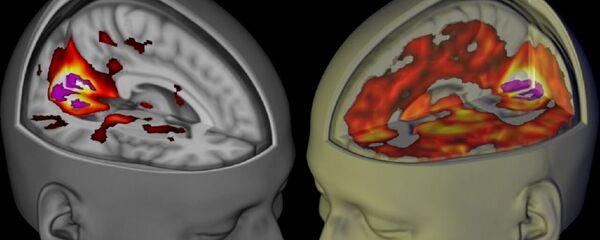A team of Swiss researchers have incorporated modern medical MRI imaging as a means to observe the brain under the influence of the notorious psychedelic hallucinogen lysergic acid diethylamide (LSD), also known as acid. Neuroscientists are now speculating that hallucinogens suppress the thalamus' gatekeeping function that allows sensory information to enter the cortex.
According to the study abstract, LSD alters directed connectivity within "cortico-striatal-thalamo-cortical (CSTC) circuitry pathways in humans, suggesting that a disintegration of information-processing within these loops is underlying the psychedelic state."
"These results inform the neurobiology of altered states of consciousness with critical implications for rational development of novel treatments," the abstract adds, alluding to the development of treatment regimens that would use LSD and other hallucinogens.
In the study, researchers looked at three groups: control subjects, a group that ingested LSD and a group that took both LSD and ketanserin, the latter a drug used in scientific research to block the serotonin system, more specifically the specifically the 5-HT₂ receptor family. Results were tracked using a $300,000 US-made Philips Achieva 3.0T whole-body magnetic resonance imaging (MRI) scanner.
Study findings revealed that those who ingested LSD alone were found to increase the amount of information to certain areas of the cortex — an area of the brain which plays a key role in memory, attention, perception, awareness, thought, language, and consciousness — while "thalamic connectivity with other cortical areas is reduced in resting state."
The thalamus is responsible for relaying sensory signals, including motor signals to the cerebral cortex, as well as the regulation of consciousness, sleep and alertness.
"This might explain the seemingly paradoxical subjective effects often reported in psychedelic-induced altered states of consciousness that are characterized by increased arousal as well as a dreamlike experience, impaired cognition but at the same time reported perceived mental clarity, and psychosis-like effects combined with blissful experiences. Therefore, psychedelics states differ from previously investigated states like anesthesia, sleep, or cognitively demanding situations," the study states.
Giving study participants the 5-HT2A-receptor-antagonist Ketanserin and LSD together resulted in changes in connections within the thalamus-PCC (posterior cingulate cortex), according to the study. The PCC has been proven to act as a neural substrate for human awareness in numerous studies.
"This is in line with a previous study showing that PCC desynchronization under the influence of psilocybin can be explained by increased excitability of 5-HT2A receptor-rich deep-layer pyramidal neurons," the study states.
Desynchronization is the disruption of neural information processing and communication between different areas of the brain.
Cutting-edge medical researchers are becoming increasingly interested in the use of hallucinogens as a means of improving structural plasticity — or the ability to change the way we think — in the prefrontal cortex.
Though long carrying the stigma of being a party drug, ecstasy (MDMA) has now been dubbed a "breakthrough" therapy by the US Food and Drug Administration for those with post-traumatic stress disorder.
In January, researchers around the world gathered in the US and Canada to kick off the third and final phase of clinical testing that will precede legal prescription-ecstasy treatments in the US by 2021, Sputnik previously reported.




